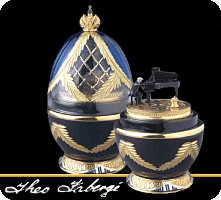![]() STECHER & HOROWITZ: COMMISSIONS – Aristo Sham, Charlie Albright, Daniel Kim, Mackenzie Melemed, Leann Osterkamp, Anna Han, Matthew Graybil, Larry Weng – Steinway and Sons
STECHER & HOROWITZ: COMMISSIONS – Aristo Sham, Charlie Albright, Daniel Kim, Mackenzie Melemed, Leann Osterkamp, Anna Han, Matthew Graybil, Larry Weng – Steinway and Sons
by Audiophile Audition | Aug 2, 2018 | Classical CD Reviews
https://www.audaud.com/stecher-horowitz-commissions-2018-steinway-and-sons/
STECHER & HOROWITZ: COMMISSIONS—LIEBERMANN: Two Impromptus—TORKE: Blue Pacific—GABRIELA LENA FRANK: Nocturno Nazqueno—DORMAN: Three Etudes—MUSTO: Improvisation and Fugue—BROWN: Suite for Piano—PISTON: Concerto for Two Pianos Soli—performed by pianists Aristo Sham, Charlie Albright, Daniel Kim, Mackenzie Melemed, Leann Osterkamp, Anna Han, Matthew Graybil, Larry Weng—Steinway and Sons 30079, 69:59
The attraction of this disc will be for those who love great piano sound and are interested in hearing original works for piano. The performers are winners of the Stecher and Horowitz Foundation’s biennial New York International Piano Competition. Melvin Stecher and Norman Horowitz started as a professional piano duo in 1951 and performed recitals together for the next five decades in the United States and many other countries. These concerts were sponsored by the National Concert and Artists Corporation/Civic Music, Columbia Artists Management/Community Concerts, and the United States State Department. In 1960 they established their School of the Arts that later became the Foundation named after the duo. The purpose of the Foundation was to provide artistic development, educational enhancement, seminars, master classes and performance opportunities for pianists.
The Two Impromptus of Lowell Liebermann (b. 1961) are melodic and subtle, music that, as Liebermann states, “deal in shades of dynamics…and require great subtlety of dynamic control, color and rubato, while asking the performer to execute daunting polyrhythmic combinations as they maintain a placid and lyrical line.” Aristo Sham plays beautifully. It’s attractive music that would make an excellent recital opener. Michael Torke’s Blue Pacific conveys a picture seen from a cliff side overlooking the Pacific Ocean with the sun sparkling on the water under balmy temperatures. The music effectively reflects the romantic scene.
Gabriela Lena Frank’s Nocturno Nazqueno (2014) portrays the gigantic geoglyphs that the ancient culture of the Nazcas (500BC to 500AD) left on the coast of Peru. Frank imagines the images of birds and monkeys dancing at night as a supplicant to their gods. Pianist Daniel Kim performs the playful scene with brilliance and tenderness. Three Etudes (2012) by Avner Dorman (b. 1975) is a finger busting exercise that is “precisely fashioned and fantastical as well as technically demanding, writes Paul Griffiths. The demands of the magical and mercurial “Sundrops Over Windy Waters” is deftly met by pianist Mackenzie Melemed.
John Musto’s (b. 1954) Improvisation and Fugue (2008) is infused with “lyrical and brooding blues,” tangy tangos and a jazzy wild presto. Pianist Leann Osterkamp masters the style with aplomb. Michael Brown’s (b. 1987) Suite for Piano (2013) is filled with variety: a playful Prelude, a pensive Chant, and an extroverted and witty “Fugue” and “Finale.”
The major work is Walter Piston’s Concerto for Two Pianos Soli (1967). It’s a second version (for two pianos) of his Concerto for Two Pianos and Orchestra that was initially commissioned by Stecher and Horowitz in 1964. It’s melodic, neo-classical music that the duo played in their recitals. In the first movement, the two pianos dance in opposition and collaboration, highlighting Piston’s contrapuntal skills and architectural mastery. The quiet and affecting adagio is followed by a glittering and vivacious Con spirito. Larry Weng and Matthew Grabil are inside Piston’s mid-twentieth century sound world.
What makes this and other recordings so acoustically perfect is Steinway Hall in New York City and their world famous pianos. The balance between clarity and reverberation reproduces the live concert experience while providing musical clarity.
—Robert Moon


